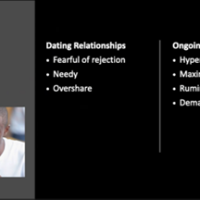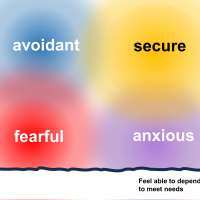It’s a truism that the media likes to make a splash of stories of people involving people with mental illness committing violent crimes: trumpeting how “these people” represent a grave danger to society and fuelling often hysterical calls for yet more controls.
All deaths are tragic, especially those involving the actions of others, this is undeniable and uncontested.
Perhaps the type of incidence that people might most fear is when someone is killed by someone they do not know [in police parlance this is called a stranger homicide, or homicide by stranger]. But how often does it actually happen that a person with a psychotic illness does kills someone? And how does the frequency of it happening compare with other ways that we might be killed?
Well, we got curious and started digging – this is what we found.
An recent international study conducted a meta-analysis on data from from five jurisdictions around the world: New South Wales [Australia]; Quebec and Eastern Ontario; Finland; and the Netherlands conducted a meta-analysis and calculated that the risk of being killed by a stranger with psychosis is 1 in 14,000,000 head of population, per year.
The risk of being killed by a stranger with psychosis is one in forteen million population, per year.
 From this we can calculate an estimate for Canada of 2 times each year.
From this we can calculate an estimate for Canada of 2 times each year.
That is certainly two too many but let’s compare it with the 2009 figure for all homicides in Canada of 598.
Police estimates are that 15% of all homicides are committed by strangers – ie by people not known to the deceased prior to 24hrs before.
Hence, the number of homicides by strangers having no psychosis can also be estimated at 88 and the number of homicides by persons known to the victim as 508.
Comparing the rates of these different types of homicide incidents we can see that, we are …
- forty four times more likely to be killed by a stranger without psychotic illness than by a stranger who does have psychotic illness.
- two hundred and fifty-four times more likely to be killed by someone we know than by a stranger with a psychotic illness.
Okay, so, what about comparisons with other ways of being killed that don’t get glorified and hyped in media?
Workplace incidents
In 2011, the number of people who were killed in a workplace incidents in Canada was 919.
- Canadians are 460 times more likely to be killed at work than by a stranger with psychotic illness.
Road traffic incidents
In 2009 the number of people who died in road traffic incidents on Canada’s roads was 2209.
- Canadians are 1,100 times more likely to die in a road traffic accident than be killed by a stranger with psychotic illness.
.
Here’s the numbers in a handy dandy table.
Table 1 Comparing risk of death by stranger with psychotic illness with other means
Risk of homicide by stranger with psychosis 1 in 14 millionnote 2.
Canadian population 2013 is reported at 34,450,000. So using this, we can calculate that in Canada we might expect 2 homicides by a stranger with psychosis per year.
| Method of being killed | Per year | How much more likely to occur? |
| Homicides by stranger with psychosis [calculated] | 2 | |
| Homicides by stranger with no psychosis | 88 | 44 x more likely |
| Homicides by stranger total [15%] note 2 | 90 | 45 x more likely |
| Homicides by non-stranger [85%] note 2 | 508 | 254 x more likely |
| Total number homicides [2009] note 2 | 598 | 299 x more likely |
| Deaths in workplace [2011] note 3 | 919 | 460 x more likely |
| Deaths in road traffic accident [2009] note 4 | 2209 | 1104 x more likely |
.
.
Fig 3 Comparison of incidence of homicide by stranger with psychosis with other means of being killed.
Commentary
Is it not time to put the [media ] hysteria about threat posed by people with mental illness into some perspective?
Thousands of people with serious mental illnesses are forced to take medications that can cause serious health problems and shorten life expectancy – because of the perceived risk that they might pose to society.
Yet the data clearly shows that compared with the risk of being killed in other ways they present much smaller risk than other groups of people who are not subject to similar controls. Indeed, to subject others to such control would likely be considered a violation of the Canadian Charter of rights.
Why is it that Canadians with mental illnesses are discriminated against in such a way? Mental Illness is recognized in Canada as disability yet there are special laws allowing people disabled with mental illness to be discriminated against by criminalizing them because some expert deems they are a risk.
So, in Canada, people diagnosed with serious mental illnesses are the only group who can be treated as criminals because they might commit a crime.
Also, given that 80% note 5 of people with diagnoses of serious mental illness have suffered traumatic childhood experiences (including but not limited to the worst kinds of abuse that adults can perpetrate on children) and subsequently often find themselves trapped in a life of poverty, depravation, coercion, violence and further trauma, what does this say about how, in Canada, we treat those who bear the scars of what others have done to them?
Meanwhile, other data and research shows that people with serious mental illnesses are four times more likely to be victims of violence, and one in four will have been attacked in the last year. Note 5
Canada, oh!
.
Sources
Study
 Homicide of strangers by people with a psychotic illness
Homicide of strangers by people with a psychotic illness
Authors: Olav Nielssen, Dominique Bourget, Taina Laajasalo, Marieke Liem, Alain Labelle, Helina Häkkänen-Nyholm, Frans Koenraadt and Matthew M. Large.
Abstract
Background: The homicide of strangers by people with psychosis, referred to here as “stranger homicides,” are rare and tragic events that generate adverse publicity for mental health services and have resulted in significant changes in mental health policy and law.
Aim: To estimate the incidence of stranger homicides, using data from previously published studies, and to compare the characteristics of psychotic offenders who killed strangers with the characteristics of those who killed a close relative.
Method: Meta-analysis of the population-based studies of homicide by persons suffering from a psychosis in which the number of subjects who killed strangers was also reported. Characteristics of stranger homicide and family homicide offenders were examined in a multicenter case–control study of homicide during psychotic illness in four high-income countries.
Results: A pooled estimate of 1 stranger homicide per 14.3 million people per year (95% confidence interval, 1 in 18.9 million to 1 in 11.5 million people per year) was calculated by meta-analysis of 7 studies. The characteristics of the 42 stranger homicide offenders from New South Wales [NSW], Quebec and Eastern Ontario, Finland, and the Netherlands were identified. Twenty seven (64%) of these had never previously received treatment with antipsychotic medication. The stranger homicide offenders were more likely to be homeless, have exhibited antisocial conduct, and had fewer negative symptoms than those who killed family members. The victims of stranger homicide were mostly adult males and the homicides rarely occurred in the victim’s home or workplace.
Conclusions: Stranger homicide in psychosis is extremely rare and is even rarer for a patient who has received treatment with antipsychotic medication.
A lack of distinguishing characteristics of stranger homicide offenders and an extremely low base rate of stranger-homicide suggests that risk assessment of patients known to have a psychotic illness will be of little assistance in the prevention of stranger homicides.
Sources
Note 1:
- Homicide of strangers by people with a psychotic illness
- http://schizophreniabulletin.oxfordjournals.org/content/early/2009/10/12/schbul.sbp112
- Full Study report[pdf] http://schizophreniabulletin.oxfordjournals.org/content/early/2009/10/12/schbul.sbp112.full.pdf+html
Note 2:
- Canada Homicide rates 2011
Note 3: Death Toll on Canada’s roads – 2009
- Transport Canada – Canadian road death figures
http://www.tc.gc.ca/eng/mediaroom/releases-2011-h036e-6328.htm
Note 4: Workplace deaths, Canada 2011
- Canada Centre for Occupational Health and Safety
- http://www.ccohs.ca/events/mourning/
Related articles
- Violence and Mental Illness: Victims, Not Perpetrators (psychcentral.com)
- New research shows road accidents kill over a million people worldwide (myparkingsign.com)
Note 5 : Mentally ill four times likely to be victim of violence





































































































I’ll wait for your .pdf version too 🙂
LikeLike
Reblogged this on Pride in Madness.
LikeLike
Many thanks for sharing. I will forward to my provincial/federal MP’s
LikeLike
Hi Susan.
How are yuo?
Please do share – it was made for sharing.
I’ll do an easy-print pdf version and add it later today.
It came to the fore last week because I’m working with a journalist who’s doing a feature on hearing voices and the fear tha arises out of mis-perception …
k
LikeLike
This is fascinating. Great for sharing too! 🙂
LikeLike